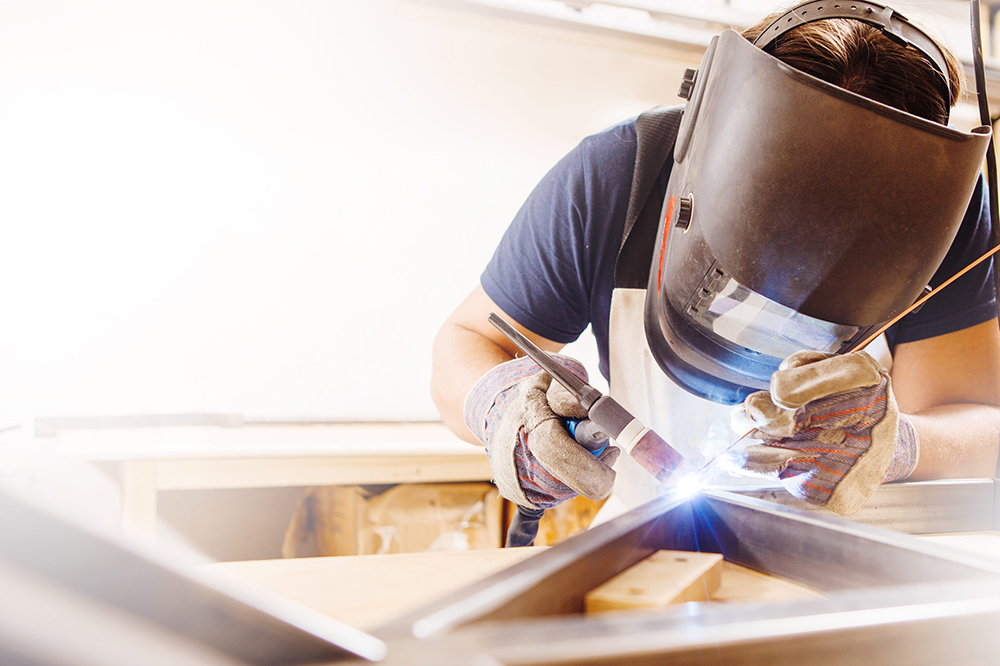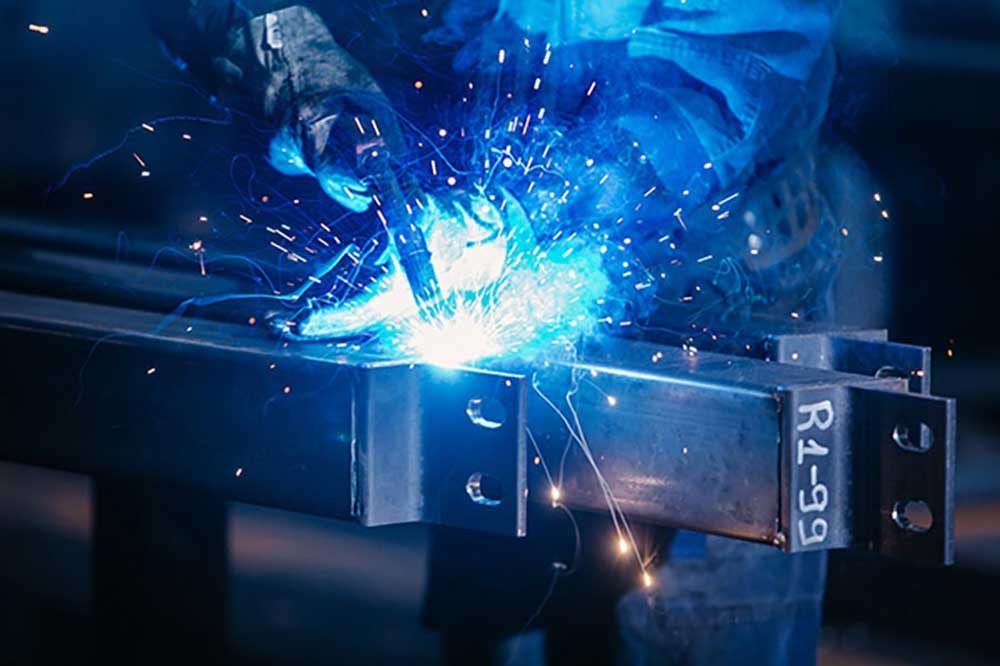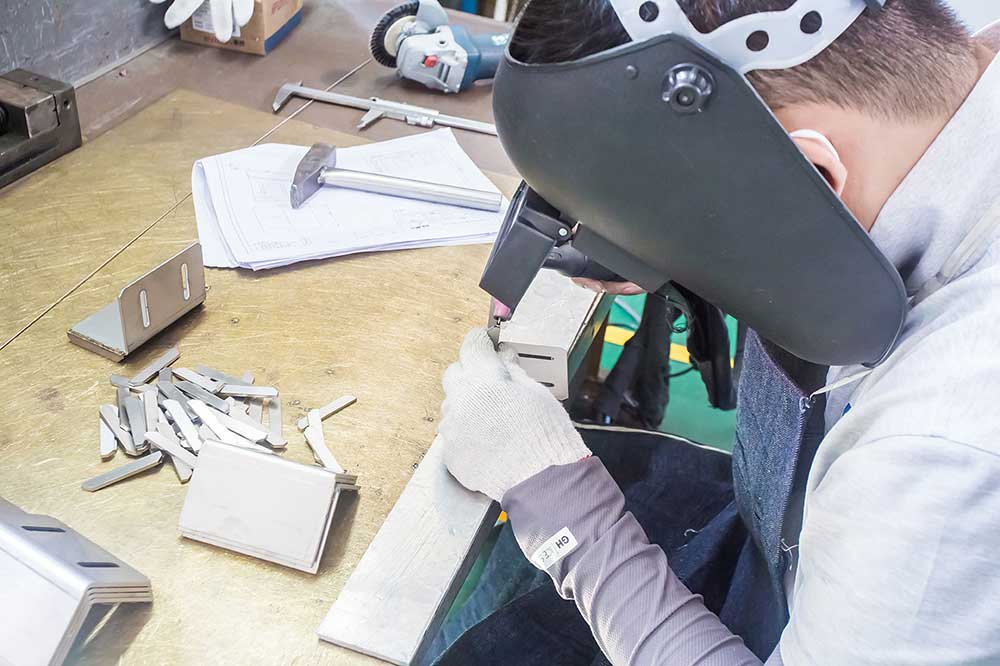Precision Hardware Customized Solutions Manufacturer
Contents
Welding sheet metal is a vital step after cutting parts to precise dimensions. Choosing the best welding for sheet metal ensures structural integrity, appearance, and long-term performance. In diverse industries—from automotive to HVAC—selecting welding techniques tailored to sheet thickness, material type, and application requirements is critical. This guide explores common methods, key considerations, and expert tips for achieving optimal results in sheet metal welding. Shengwo Machinery’s experience in precision fabrication underpins these insights, helping you choose the most reliable approach for your projects.
Understanding the best welding for sheet metal means comparing techniques by strength, speed, equipment needs, and suitability for thin gauges. The six primary methods include:
MIG Welding (GMAW)
TIG Welding (GTAW)
Stick (SMAW) Welding
Plasma Arc Welding
Laser and Electron Beam Welding
Gas Welding (Oxy-fuel)

MIG welding, also called GMAW, feeds a continuous solid wire electrode and shielding gas to protect the weld pool. For many fabricators, MIG is the best welding for sheet metal because:
Ease of Use: Straightforward for beginners and versatile for varied sheet thicknesses (from ~1 mm upward).
Speed: Continuous wire feed allows faster welds than stick or TIG in many cases.
Quality Joints: With proper settings, MIG delivers clean, strong seams on steel, stainless, and aluminum sheets.
Cost-Effectiveness: Equipment is widely available and setup is simpler than specialized methods.
Applications & Tips:
Ideal for automotive panels, HVAC ducts, and general sheet assemblies.
Use appropriate shielding gas (e.g., C25: 75% Argon/25% CO₂ for steel; pure Argon or Argon/Helium blends for aluminum) to minimize spatter and ensure proper weld bead profile.
Select a wire diameter around 0.023”–0.030” depending on sheet thickness; thinner wire helps control heat in lightweight panels.
Optimize settings: voltage, wire feed speed, and travel speed to avoid burn-through. Practice on scrap to dial in parameters before welding critical parts.
TIG welding is often regarded as the best welding for sheet metal when high-quality, precise welds are required, especially on thin metals and exotic alloys:
Superior Control: Manual feeding of filler (or autogenous weld) and stable arc produce minimal distortion.
Clean Aesthetics: TIG yields smooth, visually appealing weld seams, ideal for visible or stainless-steel components.
Material Versatility: Effective on aluminum, titanium, copper, and stainless steels used in specialized sheet assemblies.
Applications & Tips:
Preferred in aerospace brackets, medical enclosures, and architectural elements requiring spotless finish.
Use high-purity Argon shielding gas; maintain proper flow rate to avoid contamination.
Employ small diameter filler rods (e.g., 1/16” or thinner) for sheet thickness under 2 mm to limit heat input.
Control heat with pulsed TIG on very thin sheets—pulsing helps avoid burn-through and reduces warpage.
Clean material surfaces thoroughly to remove oxides and oils before welding for consistent quality.

Stick welding (SMAW) uses flux-coated electrodes, generating protective slag over the weld pool. Though less common for ultra-thin gauge, stick welding can be the best welding for sheet metal in specific scenarios:
Portability: Minimal equipment needed; useful for field repairs on thicker sheet components or structures.
Robust Joints: Good for thicker sheet welds (over ~3 mm) where penetration is critical.
Versatility: Works outdoors or in challenging conditions where shielding gas supply is impractical.
Applications & Tips:
Use on medium-thickness panels in construction frames or heavy machinery housings.
Choose appropriate electrode size (e.g., 2.5–3.2 mm) that matches sheet thickness; avoid too large electrode on thin sheet.
Employ short weld runs or tack welds to minimize heat buildup and reduce warpage.
Clean slag between passes to maintain weld quality.
While not the primary go-to for thin precision sheet, stick welding remains valuable for onsite repairs and thicker sheet assemblies.
Plasma arc welding shares similarities with TIG but uses a constricted, high-temperature plasma jet. In contexts where precision and speed matter, plasma welding can be the best welding for sheet metal:
Narrow, Deep Penetration: Focused arc reduces heat-affected zone, limiting distortion on thin sheets.
Faster than TIG: Higher energy density speeds welding while keeping quality high.
Autogenous or Filler Use: Can weld without filler on thin sheet or add filler as needed.
Applications & Tips:
Suitable for aerospace sheet assemblies, precision instrument panels, and stainless-steel enclosures requiring minimal warpage.
Use the correct nozzle and gas flow to maintain stable plasma arc; training is vital to master torch positioning.
Monitor heat input carefully; adjust travel speed to avoid burn-through.
Though equipment cost is higher, plasma welding benefits critical sheet metal projects where distortion must be minimized.

For ultra-precise, high-speed welding on sheet metal, laser or electron beam methods may be the best welding for sheet metal in specialized fields:
Laser Welding: Uses focused light to fuse edges with minimal heat input; ideal for thin stainless or aluminum sheets in medical or electronics enclosures.
Electron Beam Welding: In vacuum, delivers deep, narrow welds with almost no distortion; used in aerospace or high-reliability assemblies.
Applications & Tips:
Employed in high-value sectors (medical device housings, aerospace brackets) where joint integrity and minimal post-weld finishing are paramount.
Requires precise fixturing to align sheet edges before welding as beam processes leave little margin for misalignment.
Equipment and operating costs are higher; justify use by volume, critical tolerance, or advanced material requirements.
Consider whether joint design (butt weld vs. lap weld) suits beam welding; smooth joint edges and tight fit-up are essential.
Gas welding (oxy-acetylene or propane-oxygen) is a traditional method that can sometimes be the best welding for sheet metal in simple or portable scenarios:
Portability & Low Power Need: No need for electrical supply; useful in remote or field work.
Suitable for Thicker Sheet Repairs: Can weld steel or certain non-ferrous sheets in maintenance tasks.
Preheating & Brazing: Gas flame can preheat parts before other welding, or perform brazing on sheet assemblies.
Applications & Tips:
Use for HVAC duct repairs, pipeline sheet patches, or maintenance in locations without power.
Exercise caution: flame heat can easily warp thin sheets; limit use to thicker gauges or small repair zones.
Ensure proper flame adjustment (neutral or slightly carburizing) to prevent oxidation or carbon deposition.
Gas welding is seldom primary choice for precision sheet fabrication but remains valuable for specific repair or brazing tasks.
Selecting the right joint design supports the best welding for sheet metal outcome:
Butt Joint: Edges aligned in the same plane; common for sheet enclosures. Requires tight fit-up to avoid gaps and burn-through.
Lap Joint: Overlapping sheets; easier alignment but potential corrosion trap if not sealed properly. Suitable for thicker sheet overlaps.
T-Joint / Corner Joint: One sheet perpendicular to another; used in frame or bracket assemblies. Ensure adequate penetration without excessive heat.
Edge Joint: Sheets side-by-side or flanged; used for flanged panels. Precise alignment needed for consistent weld.
Cleanliness: Remove oils, paint, rust, and oxides. Contaminants cause porosity, weak welds, or discoloration.
Edge Preparation: Chamfer or bevel edges for thicker sheet to ensure full penetration. On thin sheet, minimize bevel to reduce heat input.
Fixture & Clamping: Use backing bars or heat sinks (copper bars) to dissipate heat and prevent warping. Strong clamping ensures tight joint fit-up.
Shielding Gas & Environment: For methods requiring gas (MIG, TIG, plasma), ensure proper flow and quality; for outdoor work, use windshields or select processes less sensitive to drafts (e.g., stick welding).
Welding thin sheet metal poses risks of burn-through and distortion. To achieve the best welding for sheet metal results on thin gauges:
Use Lower Heat Input: Choose small-diameter electrodes or fine filler wires. Adjust amperage and voltage to the minimum required for fusion.
Employ Tack Welds & Skip Welding: Weld short segments, allow cooling intervals to reduce accumulated heat.
Select Pulsed Techniques: Pulsed MIG or TIG can control heat input better than continuous arcs.
Optimize Travel Speed: Move the torch or gun swiftly but steadily to avoid dwelling in one spot.
Pre-fabricate Joints: Precision laser-cut edges fit tightly, reducing gap and minimizing heat needed to fill.
Use Backing Bars or Chill Bars: Copper or aluminum backing dissipates heat quickly, supporting weld pool and preventing burn-through.
Plan Welding Sequence: Sequence welds to balance heat distribution across the sheet; alternate sides or areas to avoid warping.
Practice on Sample Pieces: Before welding critical parts, test on scrap to refine settings and technique.
Selecting the best welding for sheet metal depends on material type, sheet thickness, joint design, production volume, and quality requirements. MIG and TIG often lead for precision and appearance; plasma, laser, or electron beam serve specialized high-precision needs; stick and gas welding support field repairs or thicker sheet tasks. Applying recommended techniques and careful preparation ensures reliable, high-quality welds with minimal distortion.

Shengwo Machinery excels in delivering the best welding for sheet metal through:
Expertise & Experience: Over a decade in precision sheet metal fabrication, understanding optimal welding methods for varied applications.
Advanced Equipment: Modern MIG/TIG/plasma welding stations, CNC cutting, and fixture systems ensure tight tolerances and consistent quality.
Skilled Technicians: Certified welders trained in thin-sheet and specialty welding techniques, able to tackle complex assemblies with minimal waste.
Comprehensive Services: From laser-cut part preparation to post-weld finishing (grinding, polishing, coating), Shengwo offers end-to-end fabrication.
Quality Assurance: Rigorous inspection and testing protocols ensure weld strength and integrity meet industry standards.
Customer-Centric Approach: Collaborative design reviews, rapid prototyping, and responsive support help you choose the right welding approach for your project.
Partnering with Shengwo guarantees access to the most suitable welding methods, efficient workflows, and reliable results that support your product performance and longevity.
Q1: How do I determine the best welding for sheet metal in my application?
Assess sheet thickness, material type, joint configuration, and desired finish. For thin gauge and visible seams, TIG or pulsed MIG often ranks as the best welding for sheet metal. For thicker repairs or outdoor work, stick welding may be preferable. Consult fabrication experts (like Shengwo) to match method, equipment, and parameters.
Q2: What welding method minimizes distortion in thin sheet metal?
Techniques with lower heat input—such as TIG with small filler, pulsed MIG, or plasma arc—are typically the best welding for sheet metal when distortion is a concern. Combined with tack welds, skip patterns, and heat-sinking backing bars, these methods help preserve flatness.
Q3: Can I weld different metals together in sheet assemblies?
Different metals (e.g., steel to aluminum) require specialized processes (e.g., brazing or adhesive bonding) rather than direct arc welding. For similar metals (stainless to stainless), TIG or laser welding may be the best welding for sheet metal to ensure clean joints. Always verify material compatibility and consult experts.
Q4: How can I improve weld appearance and strength?
Use precise cutting methods (laser) for tight fit-up, clean surfaces thoroughly, select appropriate filler and shielding gas, control heat input, and apply post-weld finishing (grinding, polishing, passivation). For visible stainless parts, TIG welding often is the best welding for sheet metal to achieve a smooth bead.
Q5: What cost factors influence the choice of welding method?
Equipment costs, labor skill level, production volume, and rework risk affect total cost. MIG welding may offer fast, economical runs for medium thickness, while TIG yields higher quality but slower speed. Plasma or laser welding involve higher initial investment but deliver precision and lower distortion for demanding projects.